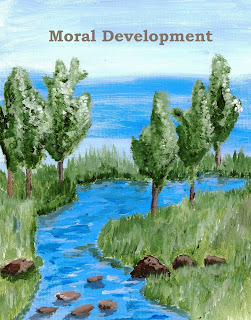High Cognitive Ability (HCA) is something we idealize in society but don't often understand its nature. Those with HCA are known to have developed new and unique contributions to society that range from business to art. For example, Steve Jobs grew Apple into a successful business and Picasso produced master works in Art. Each of them had a unique skill that was channeled into some constructive activity. It is important to understand genius in society so they can be tasked for the greatest benefit.
I read a book entitled Genius Gift or Curse? by Dr. James MacLean that delves into the biological and key modifiers of genius behavior. He studies multiple geniuses throughout history and uses his own practice to understand how HCA influences life and behavior. The work further provides an understanding of the mixed blessing and curse high intelligence bring with it and the benefit of channeling this intelligence into some useful activity.
Genius can either be a positive force or a negative force. When genius is channeled into a useful activity it often creates new and profound additions to intellectual or artistic knowledge. However, when genius is not channeled it can become a destructive force. The genius and their ability to channel appropriately is based in their childhood experiences and the influences of others.
Geniuses also have higher levels of internal angst that cause tension to create and develop new things. This so called frustration encourages to fully lose themselves into some activity. They have it is an internal desire to work on a new painting, write a new book, study the laws of motion, or any other topic/activity they find interesting.
The neuro-biological template of the genius is very different from other people. Their brains work at a faster pace and create a higher level of neural activity that leads to inspiration. Less loss of current occurs being the neurons because of a higher fatty brain material.
People with HCA often experience emotions on a higher state than others. Those biological skills that allow them to compose music, act, dance, and feel the hum of pleases sounds also offers higher emotional awareness. How this is experienced depends on the person and their ability to deal with these intense emotions.
Moral and ethical values are heightened in this population as they think deeper about the very nature of life and society. That philosophical side that were present in the moral sentiments of Plato and Homer are applied to daily questions of right and wrong. Genius become easily frustrated by lack of fairness or honesty in the system.
Genius are products of their biological nature and the environment in which they were raised. Each will naturally have an impact what types of activities the genius engages in. When properly channeled and groomed geniuses do a great many things but when their creative power is not channeled they often turn in on themselves and become destructive. Grooming those with HCA can pay dividends in the long run as society is advanced through their activities.
